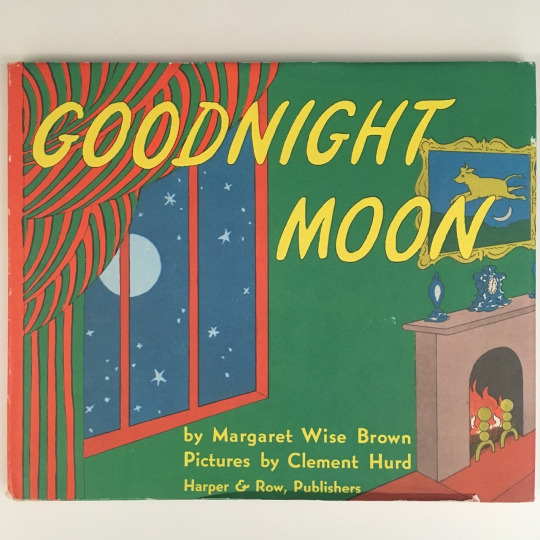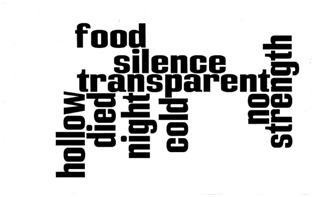Text

This picture book was found by researching the hashtag #picturebooks, it was posted by the account harpercollins, and attached was a very succinct message surrounding the book, it is as follows:
‘On July 20, 1969, humans first landed on the moon, but our favorite moon (book) came out 22 years earlier, in 1947. Here, a look inside this first edition of Goodnight Moon by Margaret Wise Brown, published by Harper & Row.’
It is an interesting picture book as it captures many different moments with the moon, as well as incorporating many different stories within the one. There are many ideas that can be taken from the book and many frontloading activities that can be devised for many various topics such as bed time stories and exploration of space.
0 notes
Text

CREATE -
How can we change the setting of the book to make it more creative?
How can we solve the major issues in the book?
Is there another way to design the setting of the book to make it more interesting?
EVALUATING -
What do you think about the name of the restaurant?
Do you think Albert will continue to work there?
Do you think the new Chinese restaurant will affect Thai-riffics business?
ANALYSING - What is the evidence for?
Why did Thai-riffic get new flyers and signs?
APPLYING -
How do we know that Alberts dad is worried about the Chinese restaurant the opened up across from theirs?
How else can we tell Albert is embarrassed of his parents business?
COMPREHENDING - What is happening in the novel so far?
Does Albert seem enthusiastic about his parents business?
Who is Thai-riffics competition?
KNOWLEDGE AND REMEMBERING -
Who are the main characters of the book
What is the setting of the book?
When is the book set?
What do you think the book will be about?
How do you know what the book will be about?
0 notes
Text

After watching this video in the classroom which displays the cultural practices of the Indigenous community, a front loading activity could be crafted. Students can write diary entries as if they were apart of the Indigenous tribes. Another front loading activity is where students make a brainstorm of ideas about what they think the Indigenous community are doing, what it means to them and the cultural differences that are present within the Indigenous community and the Australian community. This would help create ideas about the Indigenous community which sets the scene for the book that would be read.
0 notes
Text

Australians discard up to 20% of the food they purchase.
Millions of people have died from starvation which is preventable.
Each night millions of people go to bed with an empty stomach.
Starvation causes people to have no strength, leading them to perish.
Starvation is transparent, yet we cannot change it.
There is silence from the people suffering in the world.
Millions of people go to bed each night cold, and many die from hypothermia.
Fred Hollow has changed the lives of people in many third world countries.

A blind eye has been turned to the hunger and suffering in the world.
Another great frontloading activity is to get students in pairs to research images that surround the main topics of the book. Students should aim to gather around 8 images and write a few sentences on what they think is happening and the differences in the pictures when compared with Australia. The pair can do 4 each which would roughly take around 20 minutes.
0 notes
Photo

Throughout placement, we have been given the opportunity to explore in the teaching of literacy. Currently the grade five class I have been teaching at are reading the book 'Matilda', and have incorporated this into their reading and writing. I have been given the opportunity to read 'Matilda' to the class, and as a group we have decided to make a word bank of interesting words we are unfamiliar with the meaning of and create a writing lesson surrounding this.The writing lesson we created consisted of students working in pairs to search up two words from our word bank and include as follows; search online and book definition, online and book thesaurus, relevance to the text, meaning of the word and then to use the word in a sentence. Through a correlation chart feedback sheet we see the students really enjoyed the task and what they got out of the lesson was great. We still continue to add to the word bank as we continue to read the book and have even created a wall of all our words we have found. This has been a really great text to writing connection that the students can make surrounding the book we are reading. It enables them to expand their vocabulary and help them to make sense of the sentences in the book.
0 notes
Photo

Ecl310 prompt three
6+1 traits of writing: convention
This student, as seen in their writing piece, has many errors to improve upon. This would fall under the 6+1 traits of writing for 'convention', which refers to the mechanical correctness of the piece—spelling, paragraphing, grammar and the usage of punctuation and capitals. There are key questions students can refer to such as 'Is there very little work left to be corrected by the copy editor?', which enables students to thoroughly check their work to ensure they have met this criteria. Through the analysis of the work and feedback given, the student should endeavour to make changes in their future work by referencing this highly analysed piece. The use of engaging emojis has been used to display to students their errors. A key is also available to make reference to what each emoji means and then a brief explanation of the importance of a comma etc has been made. Emoji stickers are available which makes this feedback easier and highly engaging for students.
0 notes
Photo

Ecl 310 prompt two
A poster which can be used in the classroom for students which can aid in their reading abilities to understand a text, as well as being useful in their own writing of creating a visual writing piece.
0 notes
Text
Ecl310 prompt one
In primary school, I have many fond memories of being read to at a young age. One memory in particular that has stuck with me throughout the years is being read 'Fantastic Mr Fox'. I can still picture the teacher reading the story allowed with expression and excitement in their voice, whilst showing us the wonderful pictures. I remember the story so vividly as if i was being read to right now. It is memories like this that will always stay with myself and for students who are being read to in a similar situation at school. I wish to always read to my students to help them acquire a love for reading like I have, and to always remember these beautiful moments of their childhood at school.
0 notes